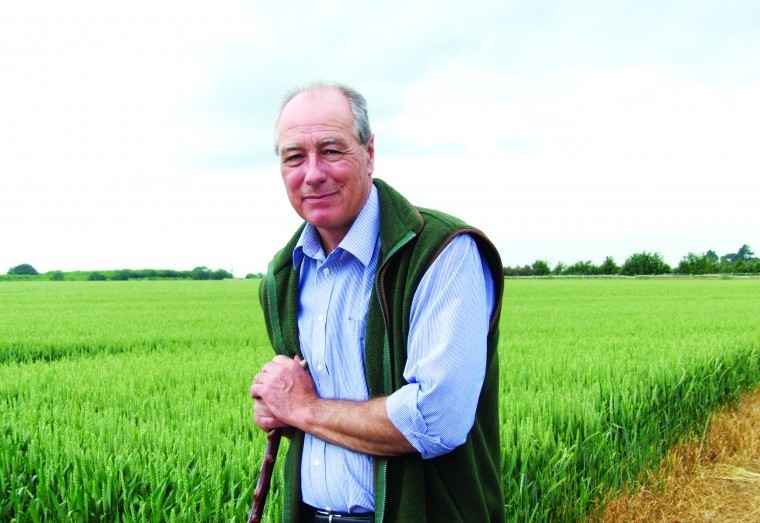The effect of the pound on arable commodity prices is still positive and we are still, as a country, a producer that is largely in balance with domestic demand. That could change but there is no great area of land to return to production under the current BPS changes. One effect of the EFA requirements of not using plant protection products on nitrogen fixing crops may well be a slight drop in the productive area as EFA land previously in beans and peas switches to fallow (or should that be set aside?) or catch and cover crops. So on balance short of a year of exceptional yields or a cut in usage (bioethanol plants and government/EU policy on biofuels aside) the situation should remain reasonably stable. I hasten to add that I am only talking from an arable perspective where I know a little and leave the other sectors to those who know a lot about them.
When I consider the politics, that is where the uncertainty comes into play. I had the pleasure of joining the NFU, CLA and TFA on a visit to the RPA in Reading. George Eustice chaired the meeting along with RPA chief executive Paul Caldwell and his team. There is no doubt the RPA are trying hard to deliver more than 90% of BPS payments in December and beat last year’s achievement. Whether they will is another matter and as I write this article on 18 December I only know of two farmers in Kent that have been paid to date. No doubt there are more but Paul Caldwell did say this year December would be a steady stream rather than an early peak.
On a positive note I have finally resolved the under payments stemming from mapping issues in 2015 that flowed into 2016 with reduced entitlements and both years are now correct and paid up. A good place to start for the 2017 payment. The downside: like many farmers across the country we have had a remapping exercise at the insistence of the EU and on pain of significant disallowance (fines to me and you) for DEFRA it has had to be completed. From what I have seen to date there are mapping changes, mostly minor and not holding up payments but with the caveat of post payment adjustments and penalties if found necessary. The amount of work is simply staggering for small changes. In our case we had teams of two or three working on and off for a fortnight. I cannot fault their diligence nor positive attitude to the job in hand and myself as a BPS claimant.
The other main play by minister Eustice concerned the recent changes made to the environmental schemes. There is no doubt a sea change is occurring in terms of moving to a non-competitive basis and the intention to ensure every farmer can once again easily join an environmental scheme. It is accepted that the move from the old ELS and HLS to the new schemes has not gone well and that acknowledgement and the intention to make changes is laudable. It may well be the first step to what is obviously a policy goal that is dear to secretary of state Michael Gove’s public heart. How that fits in with any new UK agricultural policy remains to be seen. I still struggle to see how you create a policy with industry buy-in that does not cover food production as well as environmental benefits.
As so often the Brexit noise was ‘we can do it better than Europe’ and it will be interesting to see if the fine words of Gove and Eustice during the referendum campaign do translate into fine deeds. If they want reminding of the commitments they made they only have to hit google to see what promises they made in the heat of the moment. All I can point out to both of them is that over the last three years even with BPS payments most sectors have lost money and without BPS payments in the accounts the majority of farming businesses in the UK would have lost substantial sums. BPS payments are not the only way to secure the future of UK agriculture but the challenges for any alternative system are substantial and getting it wrong will cause many casualties along the way.
So farming out in the field. Winter has arrived although not to any great degree in Kent. It remains dry and our local water companies are already raising the spectre of a second dry winter and possible supply issues next spring and summer. An early pre emptive strike but with no substance yet. Crops are generally looking very well, Oilseed rape is as good as I have seen it for many years and so far little in the way of pigeons to trouble it. A dilemma is when to apply Kerb with such strong canopies currently hiding so much of the soil making residual application very difficult.
A sequence of heavy frosts should soon knock the canopies back but little sign of that yet. On the plus side we should be leaving applications until later in January to get the longevity from the residual just as long as the heavy rains do not arrive at an inconvenient time. Wheat on the whole looks well and some very forward, but later crops with delayed drilling to assist with blackgrass control do have a way to go. Then again I will just have to get used to the disappearance of optimum drilling dates in favour of a broader range of objectives all of which contribute to yield in more complex ways and mean later drilled and more backward crops to look at during the winter.




